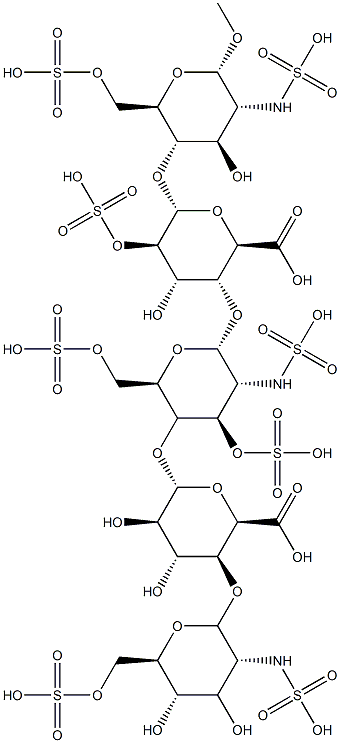The development of fondaparinux, a synthetically derived pentasaccharide that binds specifically to
and activates antithrombin III, is a further refinement on the mechanism of action of heparin.
Fondaparinus and a related analogue, idraparinux, are specific, indirect inhibitors of activated factor
Xa via their activation of antithrombin. Fondaparinux has strategically located
sulfonates that bind to antithrombin. Fondaparinux is structurally related to the antithrombotic
binding site of heparin. Unlike heparin or LMWHs, however, these inhibitors have no effect
on thrombin, because they lack the longer saccharide chains required for binding to thrombin. The
highly sulfated heparins exhibit nonselective binding to a number of additional proteins, resulting in
decreased bioavailability and significant variation in activity.
Fondaparinux is administered via subcutaneous injection with a single daily dose and shows
complete absorption. The drug is highly bound to antithrombin III (~94%), with no significant binding
to other plasma proteins. Because of the predictable anticoagulant effect, the drug does not require
routine coagulation monitoring. The drug is not metabolized and is excreted in the urine
unchanged within 72 hours in patients with normal renal function. Fondaparinux has an elimination
half-life of 17 hours. Presently, no clinically significant drug interactions have been reported.
Fondaparinux is the first selective factor Xa inhibitor that is approved for the prophylaxis of DVT,
which may occur in patients undergoing hip fracture surgery or hip or knee replacement surgery
(59).
The most common side effect is major and minor bleeding, and the patient must be carefully
monitored. The drug is not to be used when spinal anesthesia or spinal puncture is employed
because of the potential for developing a blood clot in the spine. Fondaparinux has not been
reported to cause thrombocytopenia, a condition seen with heparin. It is 100%
bioavailable, with little or no protein binding.

